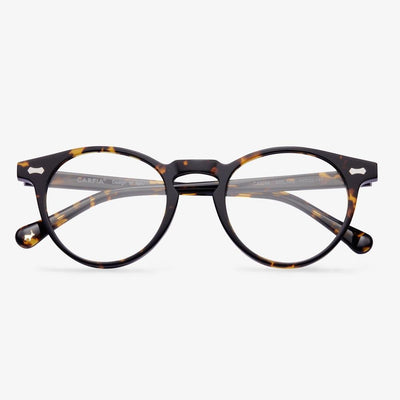How long will the titanium frame last?
Titanium and titanium alloys are often used to make the most durable frames. Their strength is comparable to that of stainless steel. Medical facilities use titanium to make medical implants such as heart valves, showing just how durable the metal can be in extreme environments. Look at the maintenance between quality and use. Good glasses electroplating after three processes, the first is in the glasses or pure raw materials, plating a layer of an adhesion layer, used to attach the plating color layer. The second is the electroplating color layer. The third one is that after the electroplating color layer, another layer of electroplating protection is transparent. The electroplating of glasses through three processes can ensure that the glasses are not easy to lose color and damage in about 5 years. Now the glasses electroplating basically omits the processing of the last layer of the color protective layer, so the service life is about 3 years.
What diopters do rimless myopic glasses suit?
What diopters do rimless myopic glasses suit? It suits myopic diopters to be used by people with diopters of 600 or less than. Usually, the high diopters are 500, 600, or above, Rimless glasses can see the lens directly. The higher the diopters, the thicker the lens. Secondly, in rimless glasses, sunlight can shine in from the axis of the lens, resulting in a dispersion effect, which has a certain impact on viewing. Thirdly, rimless lenses, without the protection of the rim, are easy to be scratched and broken, so they need to be carefully protected and stored. So to sum up, people with the diopters of 500 or 600can choose myopia rimless glasses. But it is not recommended to choose rimless glasses for people with diopters of more than 800.
Try to avoid wearing the following glasses.
If you need to wear glasses while driving, you'll need special glasses when driving at night, because common lenses reflect oncoming lights, which produces a faint glare. This will reduce your visibility. It's OK to wear contact lenses while driving. As you get older, your eyes become more sensitive to glare. Ordinary sunglasses or goggles are only suitable for wearing during the day, driving at night will seriously affect the vision (national standards stipulate that light transmittance of night driving glasses must be greater than75%). Although the all-weather driving glasses can weaken the strong lights, the vision darkens and affects road safety which does not meet the national standards for driving glasses at night. You should choose functional driving glasses that can block strong light, glare and increase the field of vision. This can effectively reduce the glare of the car lights but can filter out the extra harmful light. When worn at night, it can soften the strong lights and make the vision clearer. In this way, the safety of drivers is ensured, the fatigue of eyes is alleviated, and the radiation damage of harmful lights to glasses is prevented.
The production of carbon fiber glasses is complicated.
Designing carbon fiber glasses was a slow and complicated process. These processes are not fast in material, force, or appearance. Resin is the key to the quality of carbon fiber. Adding resin to carbon fiber can change the material into composite material. Manufacturers of these composites want to use the least resin to hold the carbon fibers together.
The lenses of prescription glasses
Common materials for lenses include glass, resin, and PC. The glass is fragile and heavy, and few people wear it anymore. PC film is tough and not fragile, but it is not resistant to high temperature and the surface is easily scratched. The most common type of lens on the market today is the resin lens, which is light in weight, hard to break, and reasonable in price. At present, it is generally recommended that you choose resin sheets, and it is recommended that people with ultra-high myopia choose glass sheets.
Generally, lenses can be divided into spherical and aspherical surfaces according to different curvature designs. When choosing, refer to the degree of the eye. For people with lower degrees, There are fewer differences between the two shapes. For people with moderate to high myopia, aspherical lenses will have better imaging effects and clearer vision.
When choosing a lens, a parameter that is often mentioned is the refractive index. Common refractive indexes are 1.56, 1.60, 1.67, and 1.74. With the same degree, the higher the refractive index, the thinner the lens.
Can you adjust your glasses by yourself?
If your frames are not suitable, adjusting your glasses at home may be easier than you think. You can solve the most common problems in the frame by yourself, but sometimes taking your glasses to an optician is the best thing to do. Of course, if your problem is your lenses, that's something you can't usually fix at home.
What Do Progressive Glasses Mean?
Progressive lenses, also called PALs, are the most popular multifocal lenses today. They offer an effective and great-looking vision solution for individuals with presbyopia. The main benefit of progressive lenses is that they do not have a visible line bisecting the lens, but rather a seamless and gradual change in power as you move down the lens.
Rather than two or three distinct zones, progressive lenses offer a smooth transition of focal powers that covers the total range of clear vision from close to far and every point in between.











































